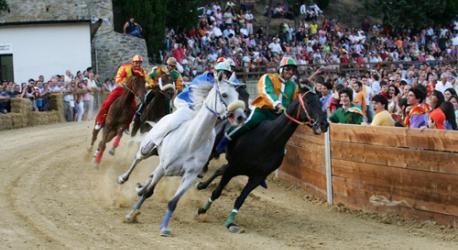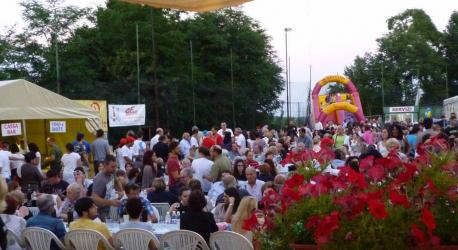From prehistoric times until the present day, Castiglion Fiorentino has always been one of the liveliest villages in the Valdichiana of Arezzo. Erected on the top of the Cassero hill and surrounded by the splendid hills of the Val Di Chio, it boasts a history to discover, and a cultural parterre that is well suited to a territory that has become, over the centuries, a fundamental crossroads between Arezzo and Cortona.
Archaeological evidence portrays it as a strategic river connection point already in the times of the ancient Etruria, but it was only during the Middle Ages that the town experienced its maximum splendor. Documents date the town with the name of Castiglione in the 10th century, when it became the feudal property of the Marquis of Monte S. Maria. By 1384, the municipality acquired the adjective "Fiorentino" when, after a period of proximity to Perugia, it definitively became subject to the area of influence of the capital city of the Tuscany region.
During the reign of Italy, Castiglion Fiorentino shared with the rest of Tuscany the fervor of the Risorgimento and the passage of the “Hero of the Two Worlds”, as evidenced by the obelisk, which stands in the center of Piazza Garibaldi. During the twentieth century, with the two world wars, it has wrote one of the saddest pages in the history of this town. The date of 19 December 1943 has engraved in the collective memory of the citizens: that day, a violent Allied bombing killed seventy-one civilians, mostly women and children, almost completely razing the entire town A tragic event that awarded Castiglion Fiorentino the silver medal for civil merit.
As a typical medieval village, surrounded by walls and its towers, Castiglion Fiorentino is also a land of castles. In addition to the majestic Castle of Montecchio Vesponi, in the locality of Mammi there are the ruins of the castle of the same name, the ancient home of the noble Lambardi family from Castiglionese. On the mountain to the east of the town, there are the remains of the Montanina Castle, an ancient stronghold of the Tarlati of Arezzo.
Contacts
Comune di Castiglion Fiorentino
Piazza del Municipio 12
info@comune.castiglionfiorentino.ar.it057565641

Between modern fervor and reminiscent spirit, the Palio of the districts is an equestrian competition that takes place every third Sunday in June. Disputed since 1932, the challenge involves the three town districts: Cassero, Porta Fiorentina and Porta Romana. The event has as a background the wide spaces of Piazzale Garibaldi where it has held for the first time on June 5, 1864, to celebrate the Statute Festival.

The Maggio Castiglionese is an occasion for celebration and a moment of meeting, a great exhibition of typical products, capable of involving the most diverse areas of the local economy: from crafts to gastronomy, passing through the agricultural machinery sector. At the peak of the grape harvest period, in the last two weekends of October, "The Days of Bacchus" take place: they promote a responsible and conscious culture of wine, together with the best labels of the area.

A summer program full of events and festivals. Among these, the renowned Ostrich Festival in Manciano, the Bishop's Festival on the rush grove, on the third Saturday of July, the Chianina Frog Festival, organized in August, among the splendid hills of Brolio, the Bisteccata di Ferragosto, in Montecchio Vesponi and the Feast of the Madonna del Bagno, celebrated on 30 July, at the homonymous sanctuary.
Built to dominate the entire Val di Chiana, the Cassero preserves the original features and charm of a medieval defensive structure. Developed around a small huts village, the area has characterized by the presence of a thick wall with towers, originally placed to defend the ancient acropolis of the Etruscan oppidum. Its majestic and unmistakable profile makes it today the main symbol of Castiglion Fiorentino and the current setting for celebrations and remembrances.
The fifteenth century Palazzo Pretorio is the ancient seat of the city's courts and prisons. It is impossible today not to be fascinated by the finds preserved in the Archaeological Civic Museum, set up on the second and third floors of the building, and by the frescoed rooms that house, on the first floor, the Municipal Library and its collections, rich in valuable manuscripts and volumes press from the abolished city corporations.
Its construction dates back to 1513. It is one of the most characteristic buildings in the entire historic center. Designed by Bernardo di Ghieba and Filippo da Bellinzona, the Loggia has traditionally attributed to Vasari following the restoration work carried out between 1560 and 1570 and the affixing of the Medici coat of arms on its facade. Located in one of the busiest squares of the town, the Loggia is also a suggestive window on the Val di Chio and its green hills.
TheAssociated paths of CASTIGLION FIORENTINO






